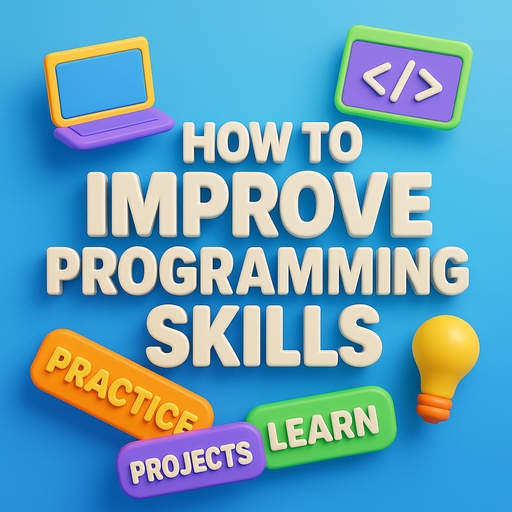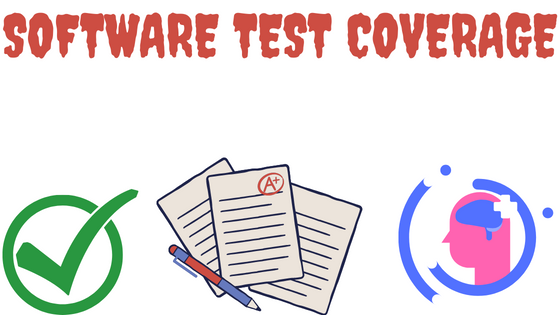Table of Contents
AI Test Case Assistants
Writing better test cases using AI Test Case Assistants is becoming essential in today’s fast-paced development cycles. Manual testing has long been a cornerstone of software quality assurance. But as development cycles shrink and demands increase, test case creation often becomes a bottleneck. Enter AI-powered test case assistants—smart tools that can transform natural language requirements into structured, executable test cases.
This article explores how these AI tools are reshaping modern QA, offering manual testers a chance to speed up, scale, and sharpen their testing capabilities without losing the human touch.
A Brief History of Test Case Design
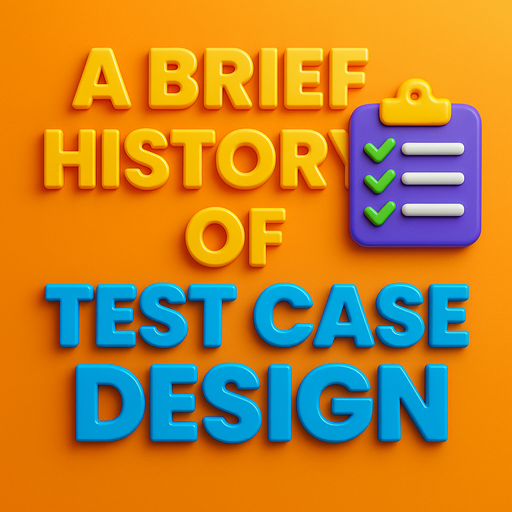
From Waterfall to Agile
In the early days of software development, the Waterfall model dictated a rigid sequence of phases: requirements, design, implementation, verification, and maintenance. Testing came last, and the test case documentation had to be exhaustive. Manual testers wrote each step, expected result, and precondition from scratch, typically using Word documents or Excel sheets.
As software evolved, this method became too slow. Test cases were often outdated before execution. Still, manual documentation remained the norm due to a lack of viable alternatives.
The Rise of Automation
The emergence of Agile and DevOps brought iterative development and continuous delivery. Automated testing tools like Selenium, QTP, and JUnit helped testers execute test cases faster. However, the task of designing and updating test cases remained manual, repetitive, and error-prone.
This led to test case debt—an accumulation of redundant or outdated cases that bloated test suites and slowed down regression testing.
The AI Opportunity
Artificial Intelligence entered the scene to eliminate the bottleneck in test design. Rather than relying solely on human effort, AI-powered assistants began to:
- Parse requirements using NLP (Natural Language Processing)
- Identify high-priority user flows
- Auto-generate test steps and expected results
These tools opened a new dimension of speed, adaptability, and efficiency in test case design.
What is an AI Test Case Assistant?
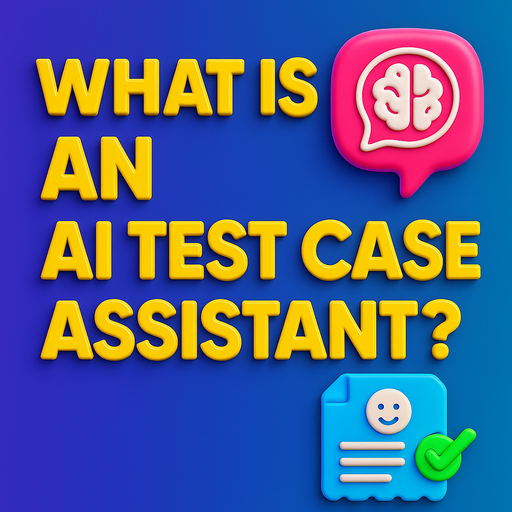
An AI Test Case Assistant is a software tool that uses artificial intelligence, especially Natural Language Processing (NLP), machine learning (ML), and pattern recognition, to assist in test design, validation, and maintenance.
Core Functions
- Requirement Understanding: Converts user stories or PRDs into test case outlines
- Test Case Generation: Drafts step-by-step test cases automatically
- Edge Case Suggestion: Offers scenarios that testers may overlook
- Bug Pattern Recognition: Analyzes past bugs to suggest similar test paths
- UI Interaction Simulation: Some tools can simulate interactions for test recording
Key Tools in the Market
- ChatGPT: Great for prompt-based test case drafting
- Testim: Offers NLP-powered authoring and test suggestions
- Functionize: Converts plain English into executable test scripts
- Applitools: Combines visual AI with regression detection
- Copilot: Assists with test logic and unit test suggestions in code editors
- Test.AI: Focuses on autonomous test generation using behavior patterns
Current Innovations in AI-Powered Testing

AI tools for test case design are evolving rapidly. Here are some innovations leading the way:
1. Self-Healing Tests
Tools like Mabl and Testim can identify when locators change in the UI and adjust tests automatically. This reduces flakiness in test automation.
2. NLP-Based Authoring
Tools like Functionize and Testim allow testers to write test steps in natural language. The AI parses and converts them into executable scripts.
3. Visual AI Validation
Applitools uses Visual AI to detect changes in UI beyond pixel comparison. This helps maintain visual consistency across browsers and devices.
4. Behavior-Driven Test Suggestions
Using telemetry and past bug patterns, tools like Test.AI can suggest new test scenarios before production issues occur.
5. Prompt-Driven Generation
Tools like ChatGPT allow QA engineers to generate test cases by simply prompting, for example: “Write 10 positive and negative test cases for a signup form.”
6. Shift-Left AI Integration
Some tools are now embedded into requirement documents or user story management tools (e.g., Jira) to provide early-stage test case suggestions.
Practical Applications for AI Test Case Assistants
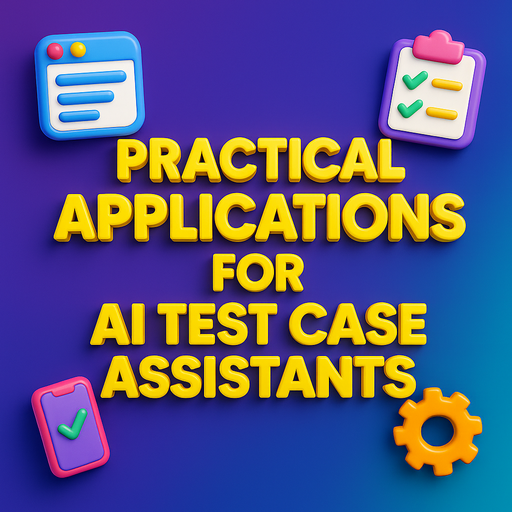
1. Web App Testing
Generate CRUD (Create, Read, Update, Delete) test cases automatically for web forms.
2. Regression Testing
Analyze recent commits and generate only impacted test cases—saving hours of regression time.
3. API Testing
Use AI to parse Swagger/OpenAPI specs and auto-generate endpoint tests.
4. Accessibility Testing
Plugins like Axe-Core can be combined with AI models to generate accessibility test cases for screen readers and contrast validation.
5. Edge Case Discovery
Prompt-based tools can suggest edge test cases you might overlook: “What if the username input contains emojis and SQL commands?”
6. Exploratory Session Guidance
AI can suggest paths to explore based on user journey analytics and past test coverage gaps.
Challenges in Using AI for Test Design
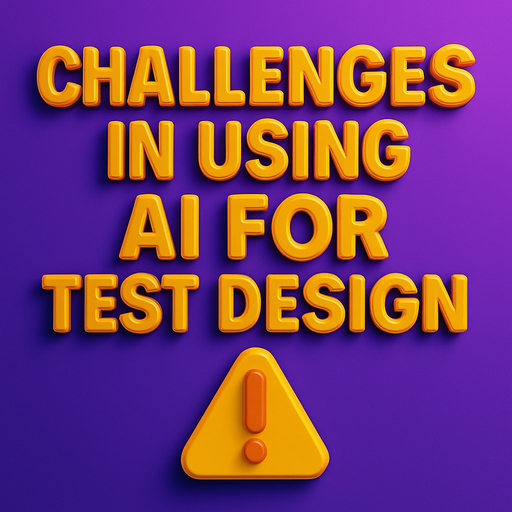
Despite their power, AI assistants come with limitations:
- Contextual Misunderstanding: AI may generate irrelevant or redundant cases without full domain context.
- Data Privacy Risks: Using public models could expose sensitive test data.
- False Positives/Negatives: Especially in visual testing, where subtle layout shifts may not be caught.
- Tool Integration: AI tools need seamless integration with CI/CD, Jira, and test case management systems.
- Model Training Needs: Custom AI models require historical defects and test data to train effectively.
Future Outlook: Where AI in Test Case Design is Heading
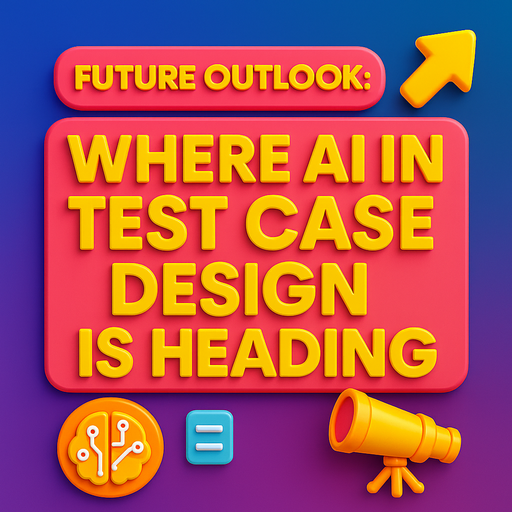
1. Multimodal Input Handling
AI will soon be able to design tests from screenshots, Figma prototypes, audio clips, or even whiteboard notes.
2. Autonomous Testing Agents
Test bots that continuously monitor applications, detect anomalies, and write tests without human prompts.
3. Domain-Specific AI Models
Fintech, healthcare, and e-commerce will benefit from fine-tuned models with domain-specific logic and compliance rules.
4. Shift-Left Integration
AI tools are integrated directly into documentation tools like Confluence or requirement platforms like Productboard.
5. AI + Human Collaboration Workflows
Expect hybrid tools that allow testers to refine AI-suggested cases before approval.
Expert Opinions

“Test case assistants reduce repetitive effort and free up mental bandwidth for exploratory testing.” — Lisa Crispin, Agile Testing Expert
“You still need a human to understand context. AI is an amplifier, not a replacement.” — Angie Jones, Lead Developer Advocate, Applitools
“Good prompts + good testers = excellent AI-generated cases. It’s all about collaboration.” — Joe Colantonio, Test Guild
Real-World Case Studies

A SaaS Company’s Speed Boost
- Problem: 3-week sprint cycles left no time for regression testing.
- Solution: Implemented Functionize to auto-generate 70% of test cases.
- Outcome: Reduced test design time by 60% and increased coverage.
Fintech Start-Up’s Bug Prevention
- Problem: Missed edge cases in transaction flows.
- Solution: Used ChatGPT with custom prompts for edge case discovery.
- Outcome: Detected 30% more defects before production.
Healthtech Platform’s Compliance Testing
- Problem: Manual HIPAA test cases were time-consuming.
- Solution: Adopted NLP-driven AI to generate compliance test templates.
- Outcome: Improved documentation accuracy and audit readiness.
Best Practices for Manual Testers Using AI Assistants

- Review Everything: Never assume AI-generated test cases are perfect. Validate before execution.
- Prompt Smartly: Use detailed prompts with examples and constraints.
- Maintain Prompt Libraries: Keep reusable prompt templates for common scenarios.
- Track AI Impact: Measure time saved, coverage increased, and defects caught.
- Mix with Manual Testing: Use AI for speed but rely on human judgment for exploratory and UI nuance.
- Stay Updated: AI tools evolve fast—continuously explore new features and models.
Final Thoughts
AI test case assistants are not a magic wand, but they are a powerful toolkit for modern QA. They help testers offload repetitive tasks, discover blind spots, and spend more time on critical thinking.
To succeed with AI in testing, you don’t need to be an engineer; you need to be curious, quality-focused, and strategic.
Embrace AI, not as a threat but as a teammate. The testers who combine human insight with AI-powered acceleration will shape the future of software quality.
🔗 Want to Go Deeper? Explore These Related QA Resources:
- Master fast-paced, intelligent testing with Test Automation with AI
- Learn why AI is your ally, not a threat, in How AI Will Empower Manual Testers — Not Replace Them
- Sharpen your intuition with Exploratory Testing: A Manual Tester’s Secret Weapon
- Strengthen your test coverage strategy in Ensuring Quality Software: The Importance of Test Coverage

